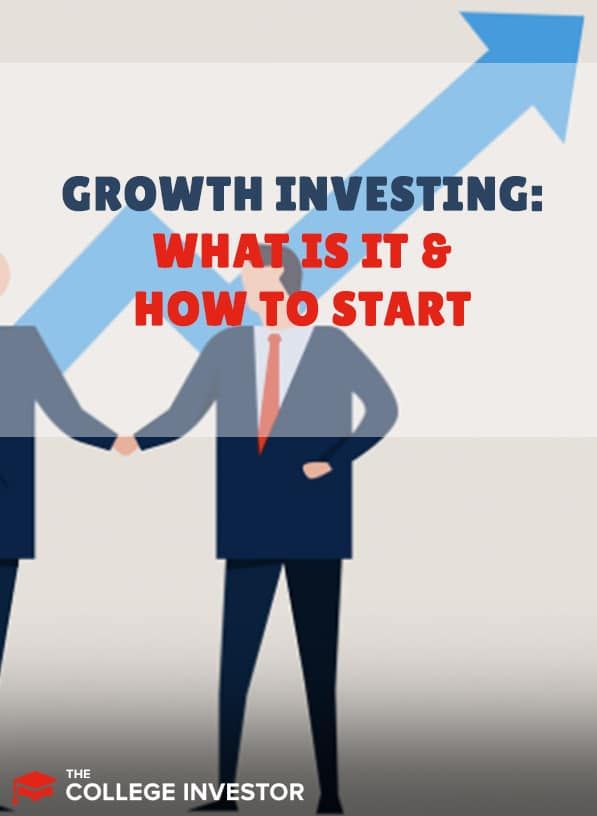
Some investing strategies are conservative, aiming for slow-and-steady growth. Others are more aggressive, accepting higher risk and volatility in exchange for the chance to earn outsized returns.
Growth investing belongs to this latter category. It involves buying stocks and funds that are expected to appreciate faster than the market as a whole.
Effective growth investors stand to enjoy substantial gains. But a growth investing strategy won’t be right for every investor’s portfolio. Is it right for you? We'll take a closer look at growth investing so that you can decide for yourself.
Check out our favorite stock brokers for low-cost growth investing >>>
What Is Growth Investing?
Growth investing is a strategy that prioritizes buying stocks that are expected to rise at a faster rate than their competition. Often the goal is to buy stocks before they really take off. You're essentially hoping to arrive to the game early and catch a ride to big returns.
Dividends typically play a smaller role in stock-picking decisions for growth investors. Instead, they're primarily hoping for the stock's share price to rise so that they can enjoy a big payday when their holdings are sold.
Growth investors shouldn't be confused with traders. Unlike with day or swing trading, growth investing often still includes a long-term mindset. Over several years or decades, growth stocks can enjoy dramatic returns. But there are also risks to long-term growth investments as market volatility can easily shift any particular company’s fortunes.
Growth investing is also different than value investing, although both strategies rely heavily on fundamental analysis. In value investing, investors seek undervalued companies with established financials and, often, more price stability.
Common Types Of Growth Stocks And Funds
Although growth stocks can come from any industry, certain sectors produce growth stocks more regularly. Below are three examples:
As you explore the market looking for growth stocks, you’ll find companies from a wide range of industries. However, the sectors above can be great places to begin your search.
How To Evaluate Growth Investments
When you're looking to become a growth stock investor, it can be disappointing to learn there isn't a universal formula used by all growth investors. With that, you’ll need to take a variety of factors into account before moving forward with any particular stock, mutual fund, or ETF.
You can assess an investment's potential growth with a combination of quantitative and qualitative measures. It's important to realize there will always be some amount of subjectivity in your growth investing choices. But here are a few helpful measurements to inform your decisions.
In addition to these measurements above, you should also consider less measurable aspects of a company. These might include the brand loyalty of the customer base, patented innovations that could change the market place, and other points of interest that set the company apart from the competition.
Related: Best Valuation Ratios For Stocks
Who Should Try Growth Investing?
Although growth investing can be a good strategy for some investors, it’s not for everyone. You’ll need to take your own investment objectives in mind before diving into growth investing.
Growth stock investors are seeking high returns. But the potential for high returns comes with an increased risk. With that, you’ll need to have a relatively high risk tolerance to comfortably invest in growth stocks.
Beyond the debate of growth investing versus value investing, you should decide if you even want to invest in individual stocks. It can take time and energy to manage a growth stock portfolio effectively. Do you have the time to dedicate to this task?
If not, you might dedicate a small portion of your portfolio to individual stocks while placing the bulk of your money in an ETF or mutual fund that invests in growth stocks. Or, for even broader diversification, you can invest in index funds that include a mixture of both value and growth stocks.
Final Thoughts
Growth investing can lead an investor to capitalize on investments that outperform the rest of the market. It can take time and energy to pursue these higher-risk investments, but they could be worth the rewards over the long-term.
To get started with growth investing (or any other investing strategy), you'll need a brokerage account. Here are some of our favorite brokers. Want to learn more about how to start investing? Check out our free resources!

Robert Farrington is America’s Millennial Money Expert® and America’s Student Loan Debt Expert™, and the founder of The College Investor, a personal finance site dedicated to helping millennials escape student loan debt to start investing and building wealth for the future. You can learn more about him on the About Page or on his personal site RobertFarrington.com.
He regularly writes about investing, student loan debt, and general personal finance topics geared toward anyone wanting to earn more, get out of debt, and start building wealth for the future.
He has been quoted in major publications, including the New York Times, Wall Street Journal, Washington Post, ABC, NBC, Today, and more. He is also a regular contributor to Forbes.
Editor: Clint Proctor Reviewed by: Chris Muller
